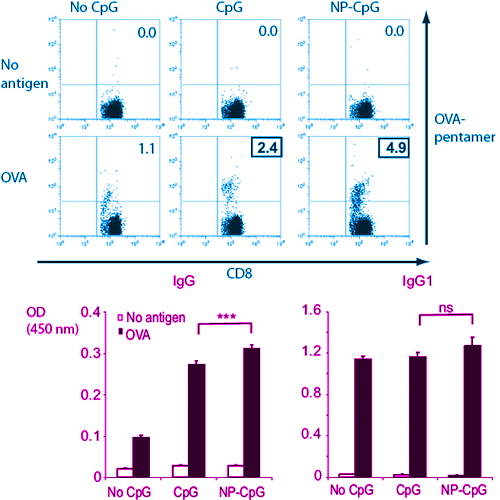Targeting CpG Oligonucleotides to the Lymph Node by Nanoparticles Elicits Efficient Antitumoral Immunity
21-Jun-2008
Viral nucleic acids are recognized by specific pattern-recognition receptors of the Toll-like and RIG-I-like receptor families. Synthetic DNA and RNA oligonucleotides can activate the immune system through these receptors and potentiate Ab and CD8 cytotoxic responses to Ags. Systemic application of immunostimulatory oligonucleotides however also results in a generalized, non-Ag-specific stimulation of the immune system. In this study, we have dissociated the induction of an Ag-specific response from the systemic immune activation generally associated with immunostimulatory oligonucleotides. Delivery of CpG oligodeoxynucleotides that bind TLR9 by cationized gelatin-based nanoparticles potentiates the in vivo generation of an Ag-specific cytotoxic T cell and Ab response. Furthermore, immunization with CpG-loaded nanoparticles induces a protective antitumoral response in a murine model of melanoma. The systemic release of proinflammatory cytokines and widespread immunostimulation associated with free CpG is however completely abolished. In addition, we show that gelatin nanoparticle formulation prevents the destruction of lymphoid follicles mediated by CpG. Nanoparticle-delivered CpG, in contrast to free CpG, are selectively targeted to APCs in the lymph nodes where they mediate local immune stimulation. We describe a novel strategy to target immunostimulatory oligonucleotides to the initiation site of the immune response while at the same time protecting from an indiscriminate and generalized activation of the immune system.











